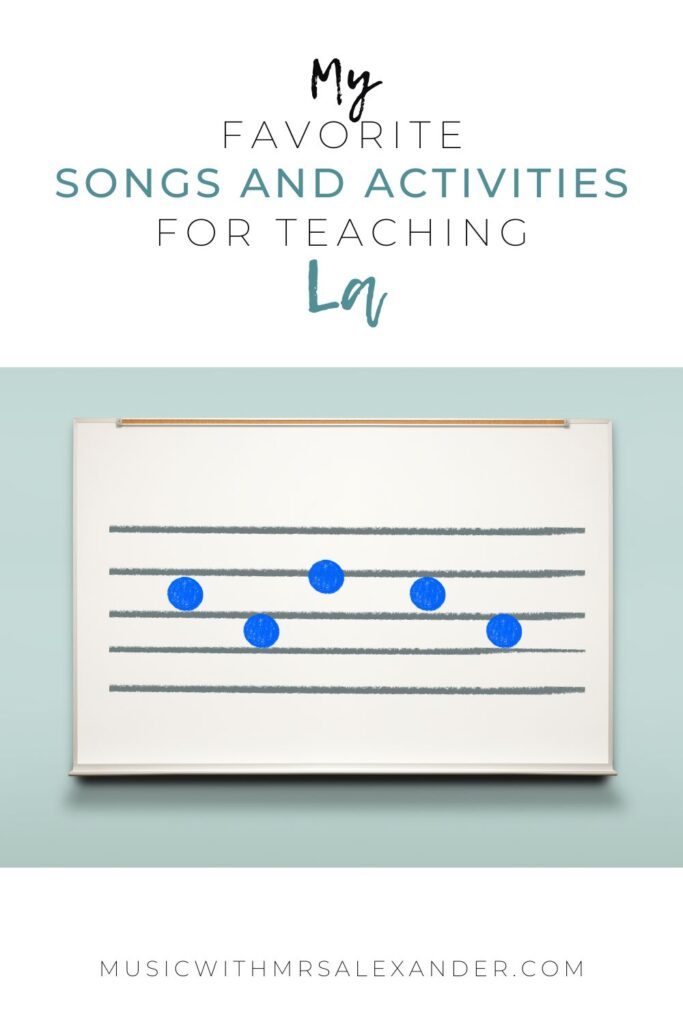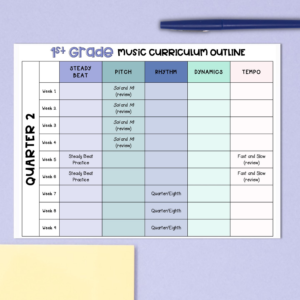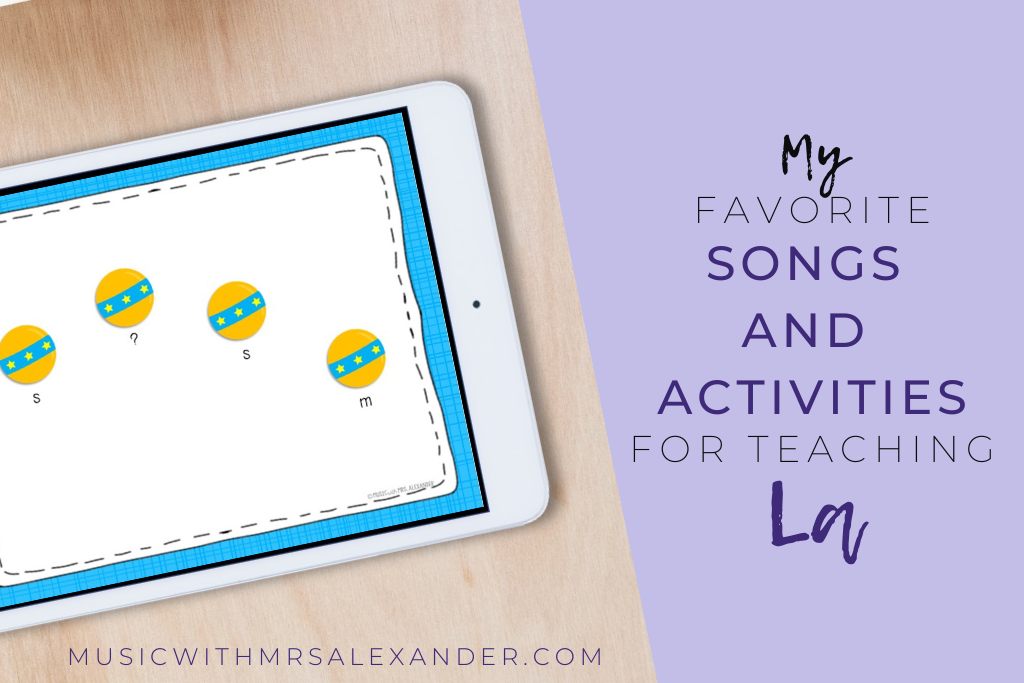
When introducing a new pitch to your students, you want them to experience it in many different ways. Singing, playing on an instrument, moving, touching, tasting…well, maybe not that last one. But you get the idea. Once you put a name on that new sound, it should be super familiar. So how do you make that happen? Plan lessons that build upon each other AND allow your students to experience the new pitch in all those ways I mentioned before. Except tasting. Unless you’re down with that. If your kiddos have mastered sol/mi and are ready for the next step, read on to see some of my favorite songs, games, and activities for teaching la in my music room!
Songs for Teaching La
Apple Tree
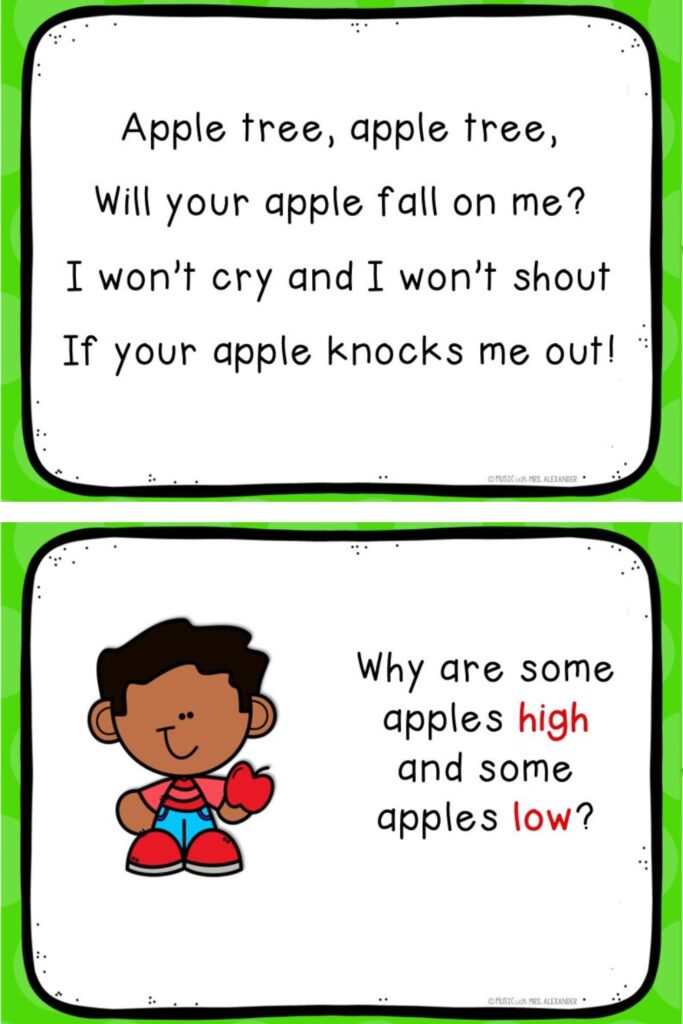
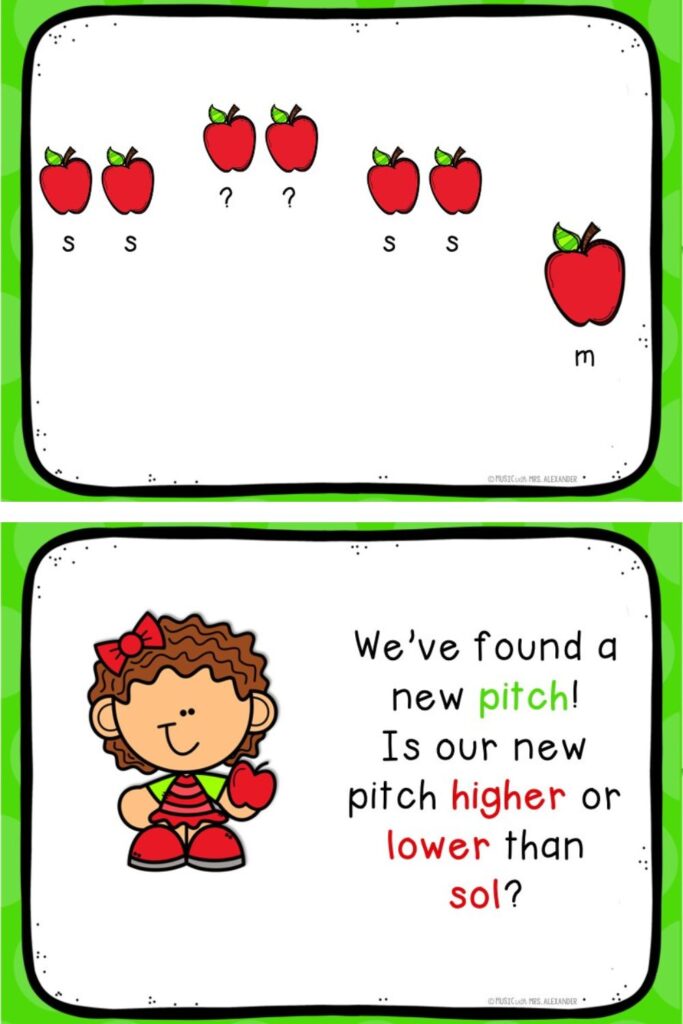
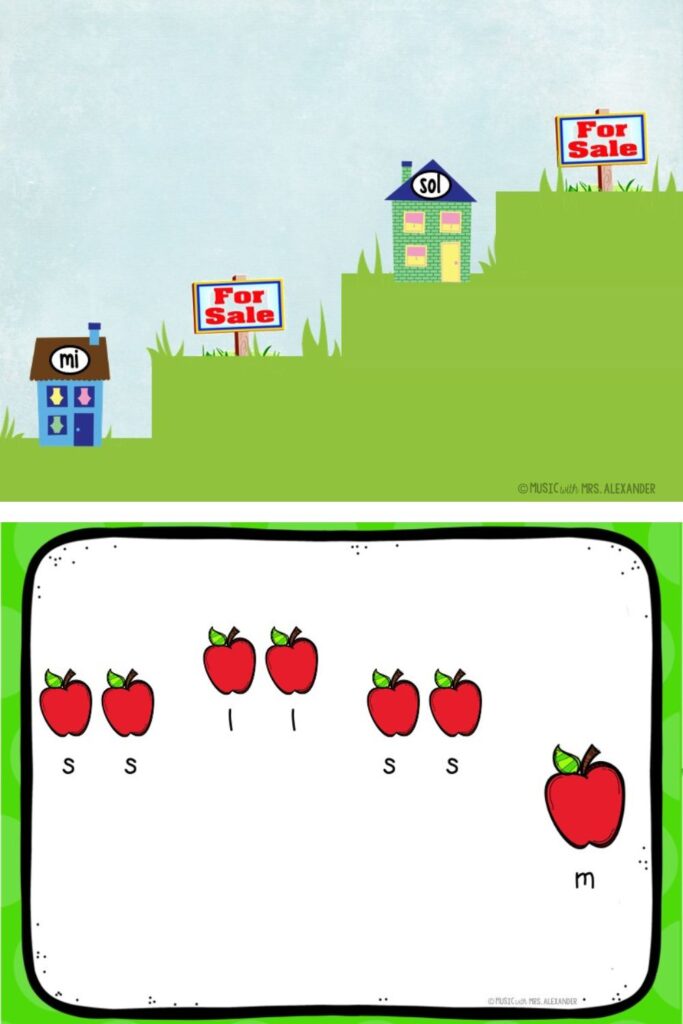
If you’re a frequent reader of my blog, you know how much I love Apple Tree! It’s a great all-purpose song that teaches several different concepts. I use it in first grade and the beginning of second grade for teaching la. After playing the game, we notate the melody with manipulatives to discover our new pitch.
First, we decide if our new pitch is higher or lower than the pitches we already know, sol and mi. Then, we look at our pitch neighborhood and decide where our new pitch should live. It moves in one step higher than sol, making our new pitch la.
Once we’ve identified our new pitch, we spend time notating mi/sol/la melodies on the music staff. This is usually my students’ first experience with an actual music staff because I use a nontraditional one for notating sol and mi. We spend time with the lines and spaces, learning to number them from bottom to top and how our new pitch la gets sliced in half by the line. (the horror! 😂)
Math manipulatives are perfect because I can have my students move them around on the staff and line them up instead of writing and erasing them.
Bounce High, Bounce Low
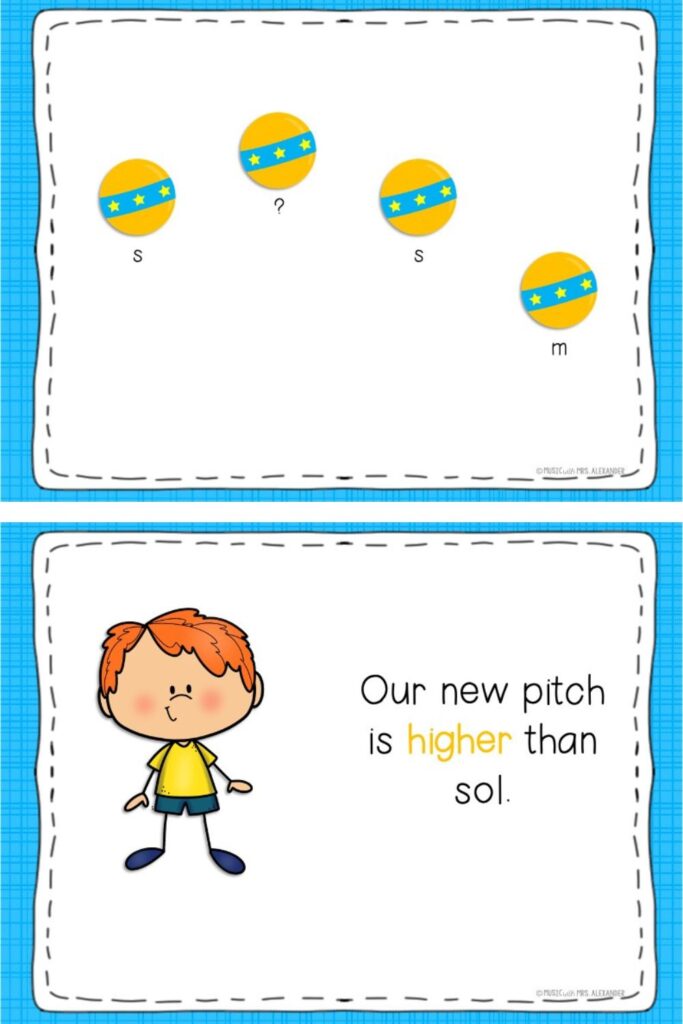
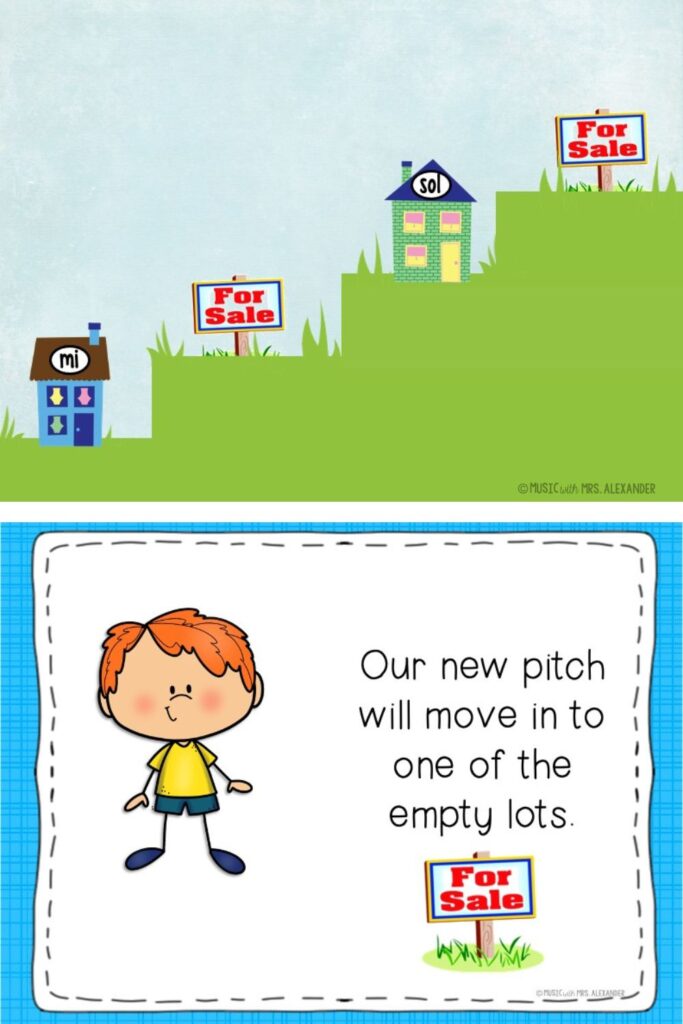
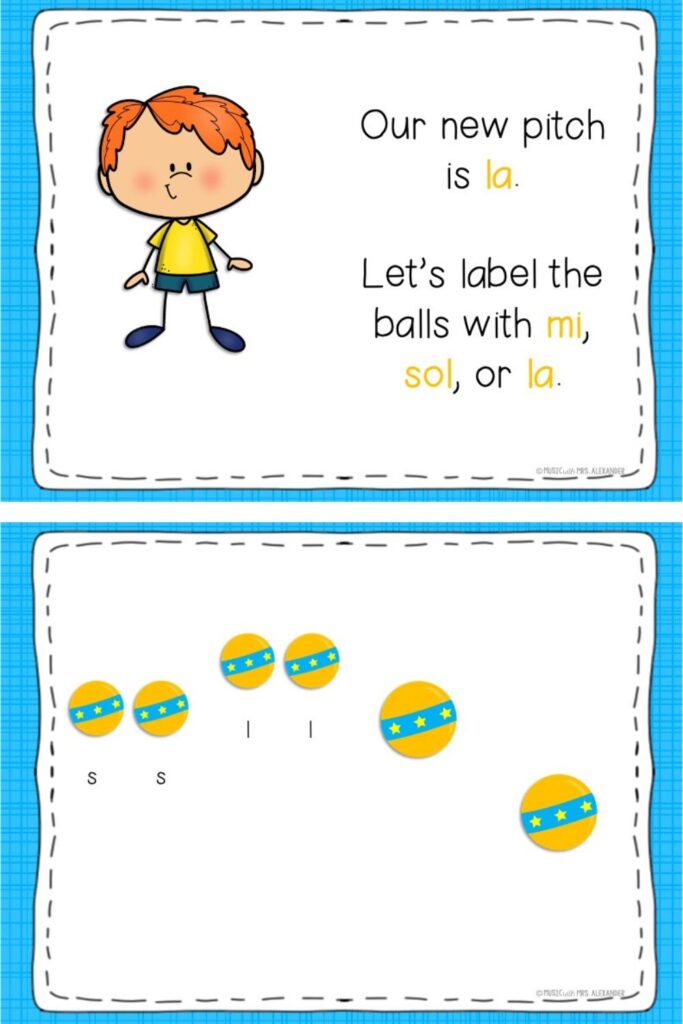
Bounce High, Bounce Low is another game song that uses la in a sol-la-sol-mi pattern. There are a few different ways to play the game, but this adaptation I made seems to work best. I’ve found it keeps my students more engaged at the outset than the traditional game.
- After teaching the class the song, make a circle. The teacher demonstrates the following pattern while the class practices with an imaginary ball.
- Add the song. On “Shiloh,” bounce the ball to a student in the circle. The student then passes the ball back to the teacher.
- With a partner, students practice the bounce-catch and bounce-pass patterns. Then, have students create groups of four to practice while singing.
- Keep combining small groups until the whole class is back in the circle together.
In week two, we add an instrumental accompaniment to the song. The students change the bounce-catch pattern to pat-clap. We practice the accompaniment on the body while singing, then transfer it to Orff instruments, where the claps become mallet clicks.
I introduce la in week three. The process is much the same as with Apple Tree–we identify our new pitch as a sound higher than sol, then we practice writing melodies containing our new pitch on the music staff.
Doggie, Doggie
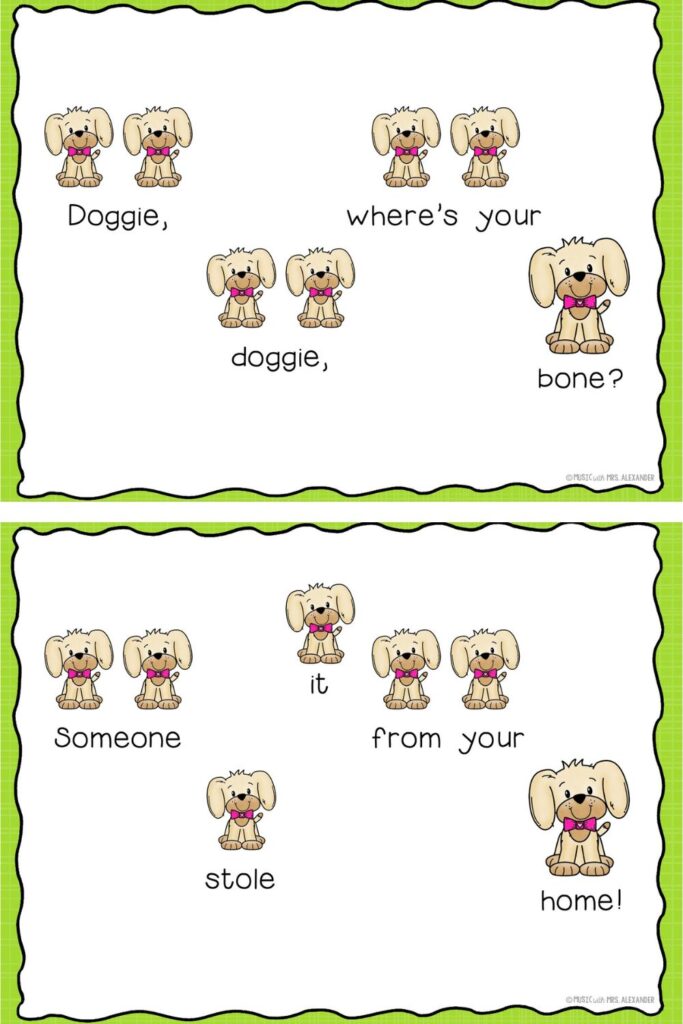
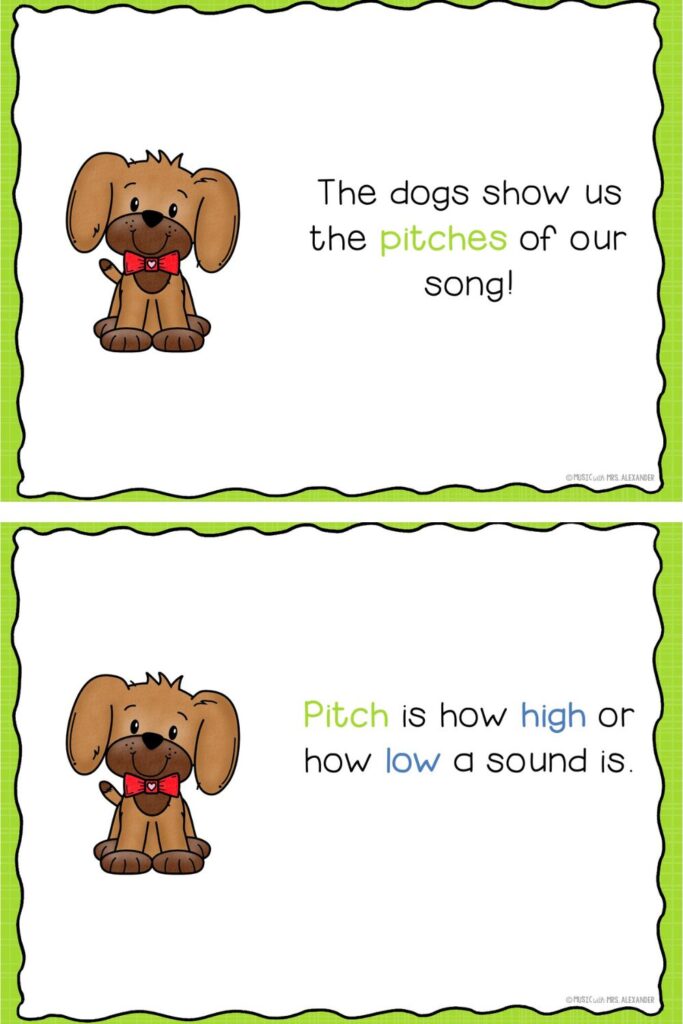
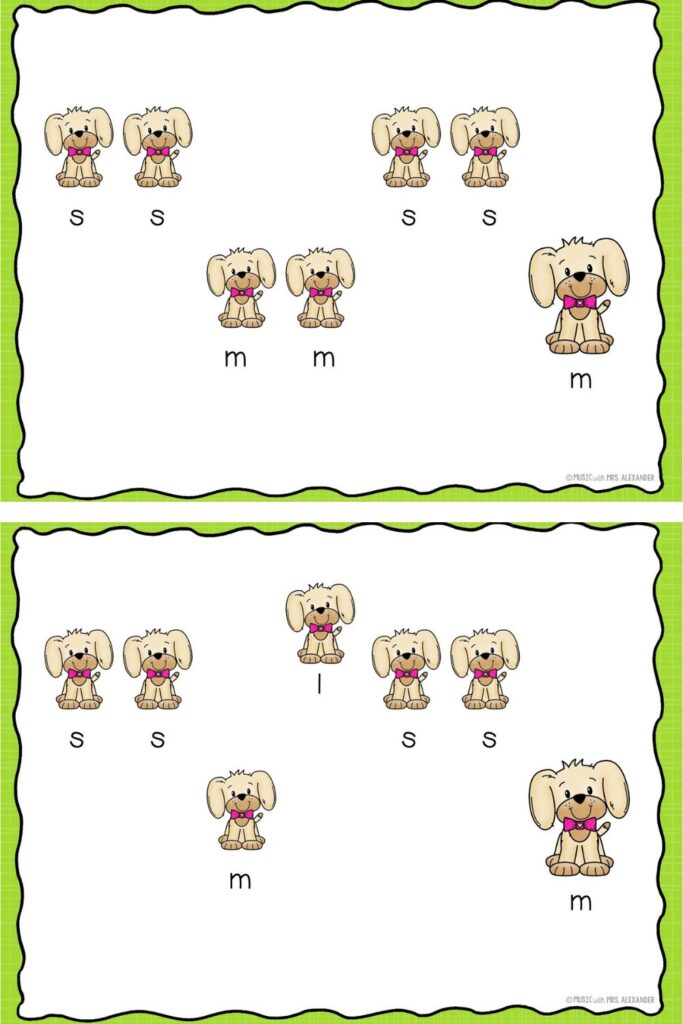
If you’re looking for a song that has la in a sol-mi-la-sol-mi pattern, Doggie, Doggie is a wonderful choice. Plus, it has a fun game that my students love! I typically use this song at the beginning of second grade to review la and quarter/eighth note rhythms. Once we learn the song, we play the game.
- Choose one student to be the dog. They sit with their back to the class.
- Once they are seated, secretly give the bone to another student. They will hide the bone in their lap or behind their back.
- The class sings the first two lines of the song.
- The dog sings, “Who stole my bone?” The student with the bone sings, “I stole your bone!”
- The “dog” turns around and has three tries to guess who has the bone.
- Repeat as many times as desired.
In the second lesson, we decode the melody of Doggie, Doggie and label the pitches with mi, sol, or la.
Activities for Teaching La
Melody Flash Cards
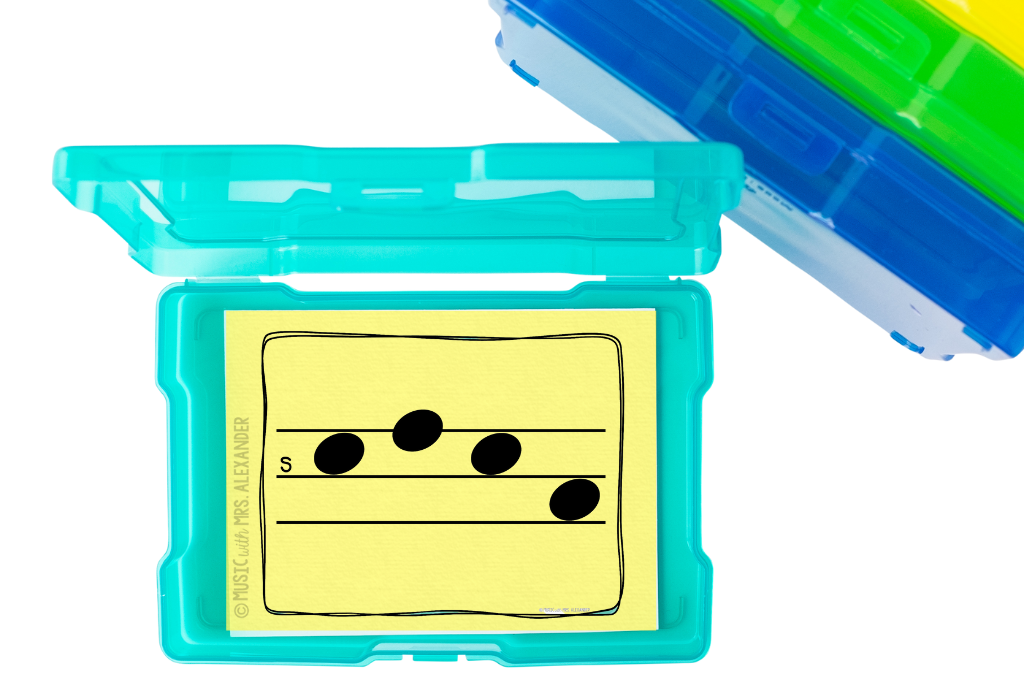
I know what you’re thinking. Music flashcards don’t sound like a whole lot of fun. But hear me out–if we think outside the box, they have some pretty cool uses aside from the traditional drill and flip!
- Print two sets of flash cards. Shuffle and flip them face down on the floor for a melody memory match game.
- Tape the cards around the room. Give students a recording sheet and use them as a “write the room” activity.
- Instead of just reading or singing the melody, have students play it on an instrument.
- Use fun manipulatives (mini erasers, pom poms, play dough) and have students copy the melody from the card for a staff notation practice activity.
Specdrums
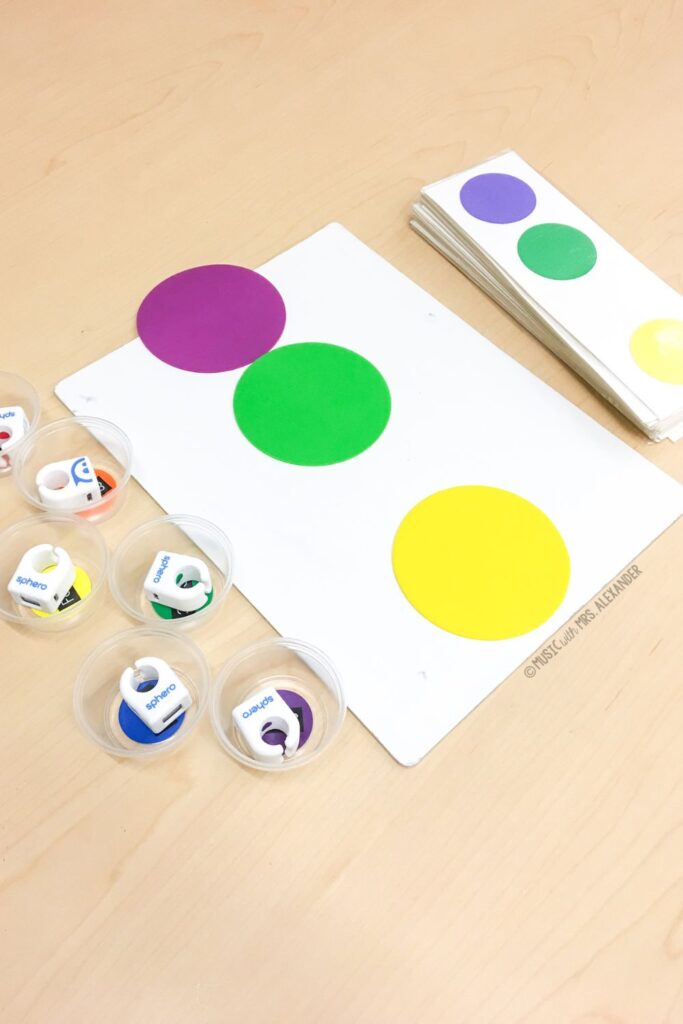
Adding Sphero’s Specdrums gives traditional tone ladders an exciting twist! The rings connect to your iOS or Android device via Bluetooth. Through the Specdrums EDU app, you can program them to play certain pitches (or any other sounds) when they tap a specific color. We use the rings to practice echoing la/sol/mi melodies together. I have also used them in small groups for decoding known songs. Each group gets an iPad, a set of Music-Go-Rounds silicone squares (purple-la, green-sol, yellow-mi), and a Specdrums ring. The students work together to put the melody in the correct order, using the ring to check their work. Check out this blog post to learn more about how I use Specdrums.
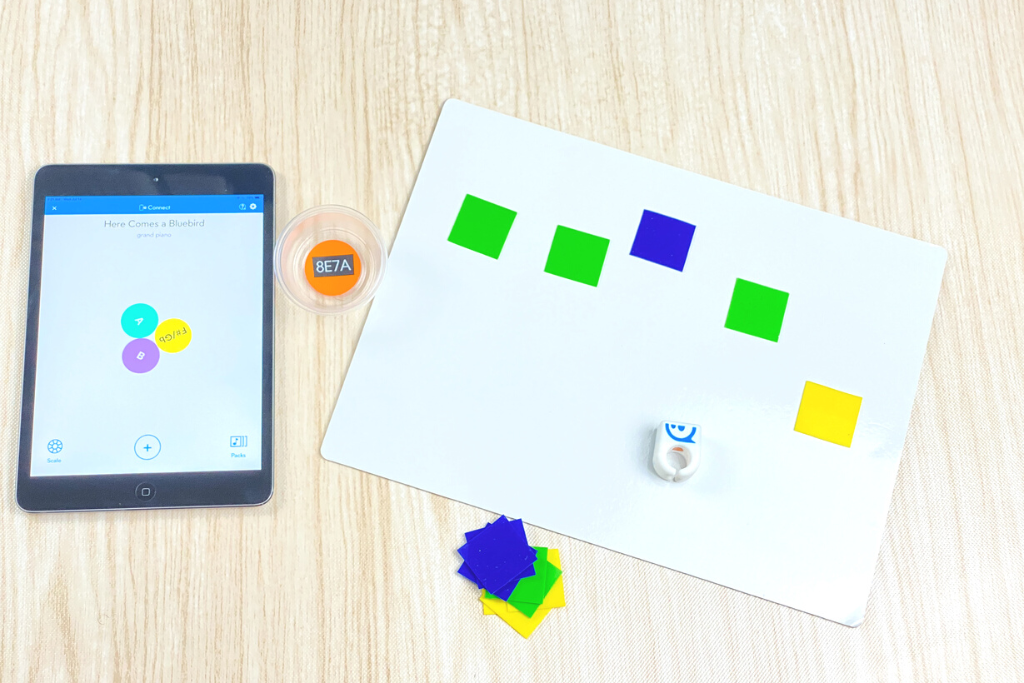
Self-Checking Music Centers for Pitch
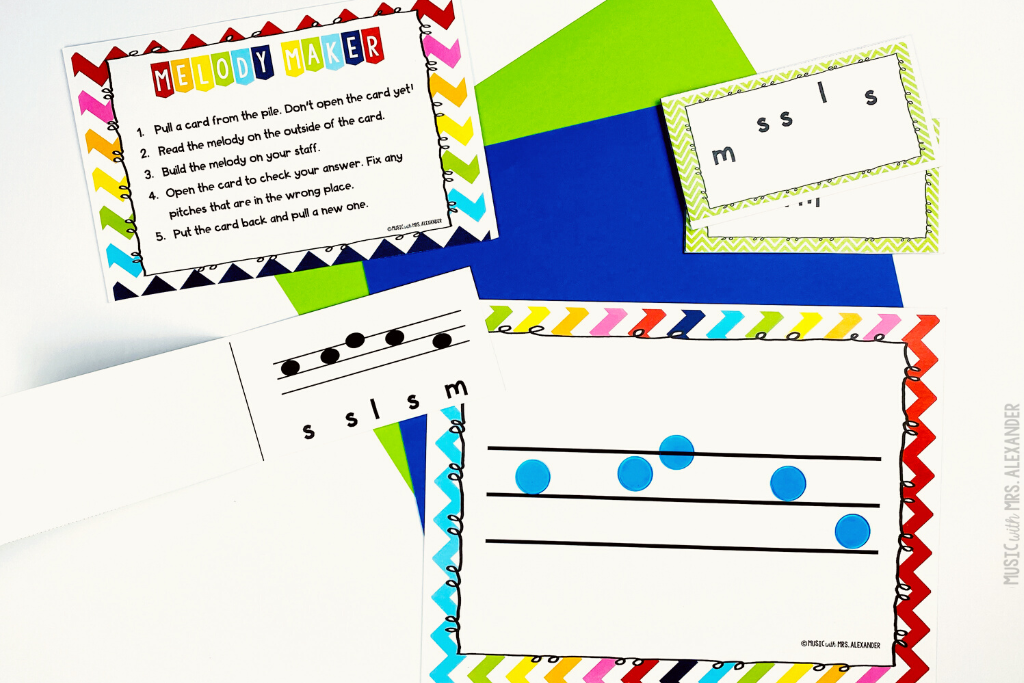
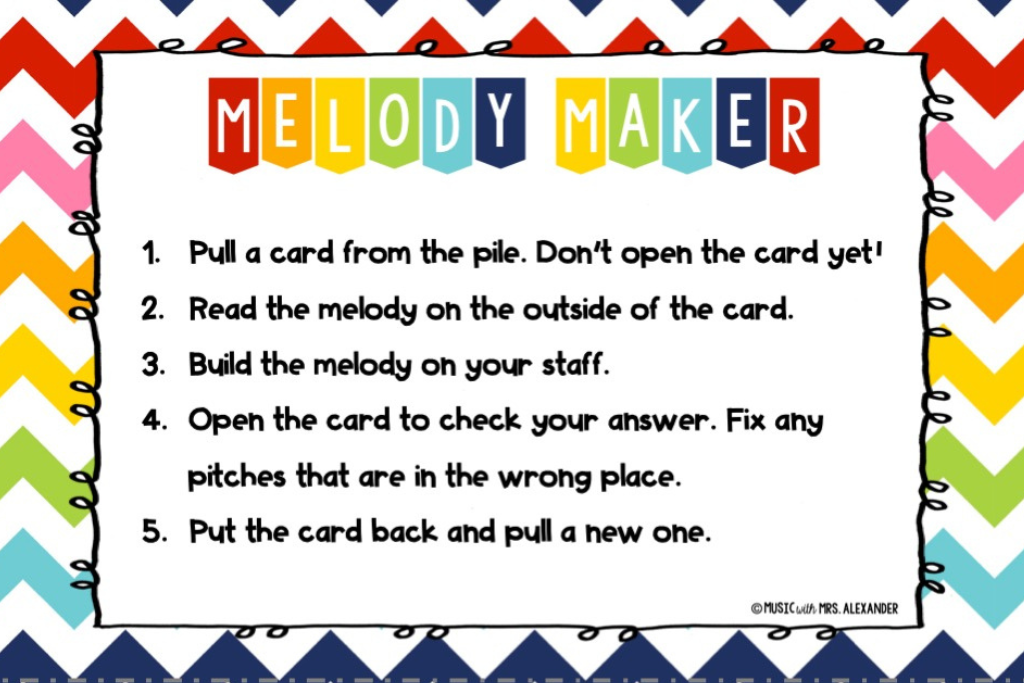
Melody Maker is one of my go-to pitch practice centers. Best of all? It’s self-checking! Before the students work in this center independently, we practice making la/sol/mi melodies with manipulatives as a class. This is typically my first graders’ first exposure to the music staff, so we spend some time identifying lines and spaces and making sure we don’t stack the pitches on top of each other. Once they are comfortable with the staff, we practice the steps of the center activity together. First, I pull out a melody card, and we read the outside of it. The students build the melody using bingo chips (or other math manipulatives). Then, I open the card and have the students check their answers. I tell them to make sure the noteheads on the staff inside the card match the bingo chips on their music staff.
Seasonal Music Centers–Melody Match-Up
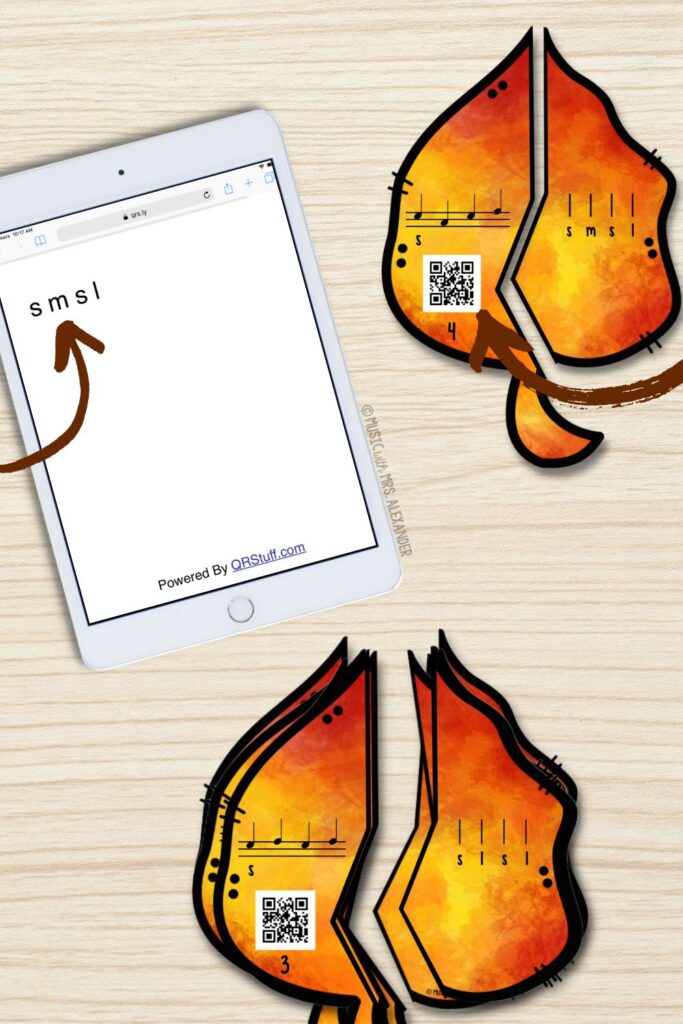
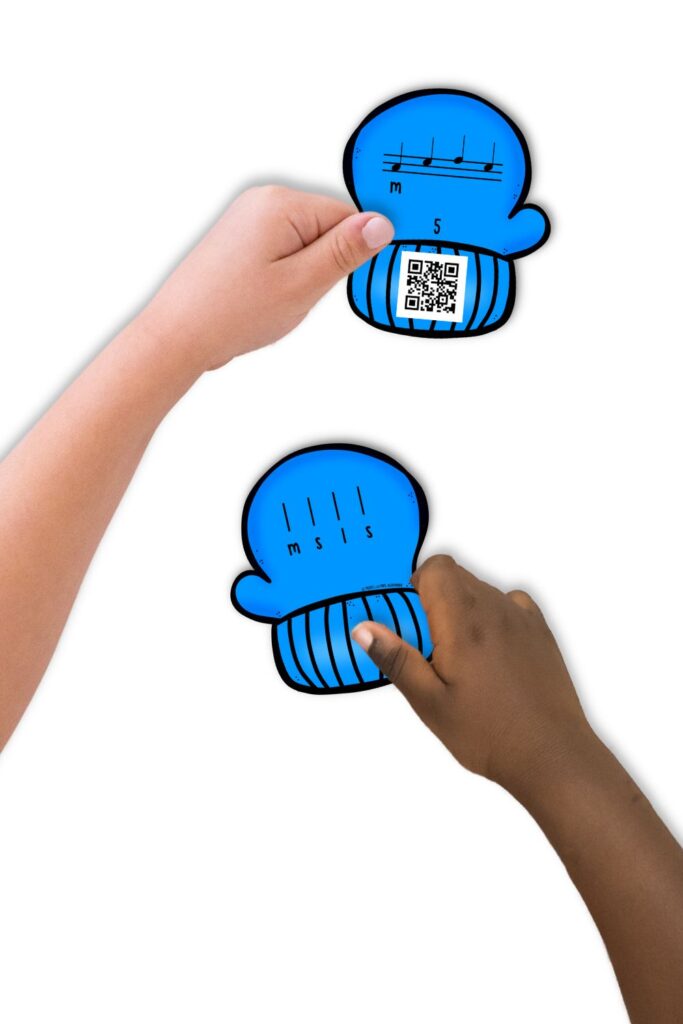
These seasonal melody match-up games are great for whole-class or small-group melody reading practice. Here are three ways I use them with my students:
- Scavenger hunt: Put one half on the walls around the classroom. Give students the other half. They work individually or in pairs/groups to find matches.
- Partner match: Give each student a half. They search for their partners, then sit once they have a match.
- Group work: Give students a set of mixed-up pairs. Fewer pairs make the task easier, while more make it harder. Work individually or with a partner to find matches. The QR code on each set makes the activity self-checking!
And there you have it. I hope this post gave you a taste (heh, heh 😏) of the myriad of experiences you can have with our new pitch la. Wondering when you should teach la? Or what to do next? Click here to grab my FREE K-2 music scope and sequence. It gives you a full year (36 weeks) of suggested topics, all arranged in sequential order. No more wondering what on Earth to teach from week to week! Happy planning!
